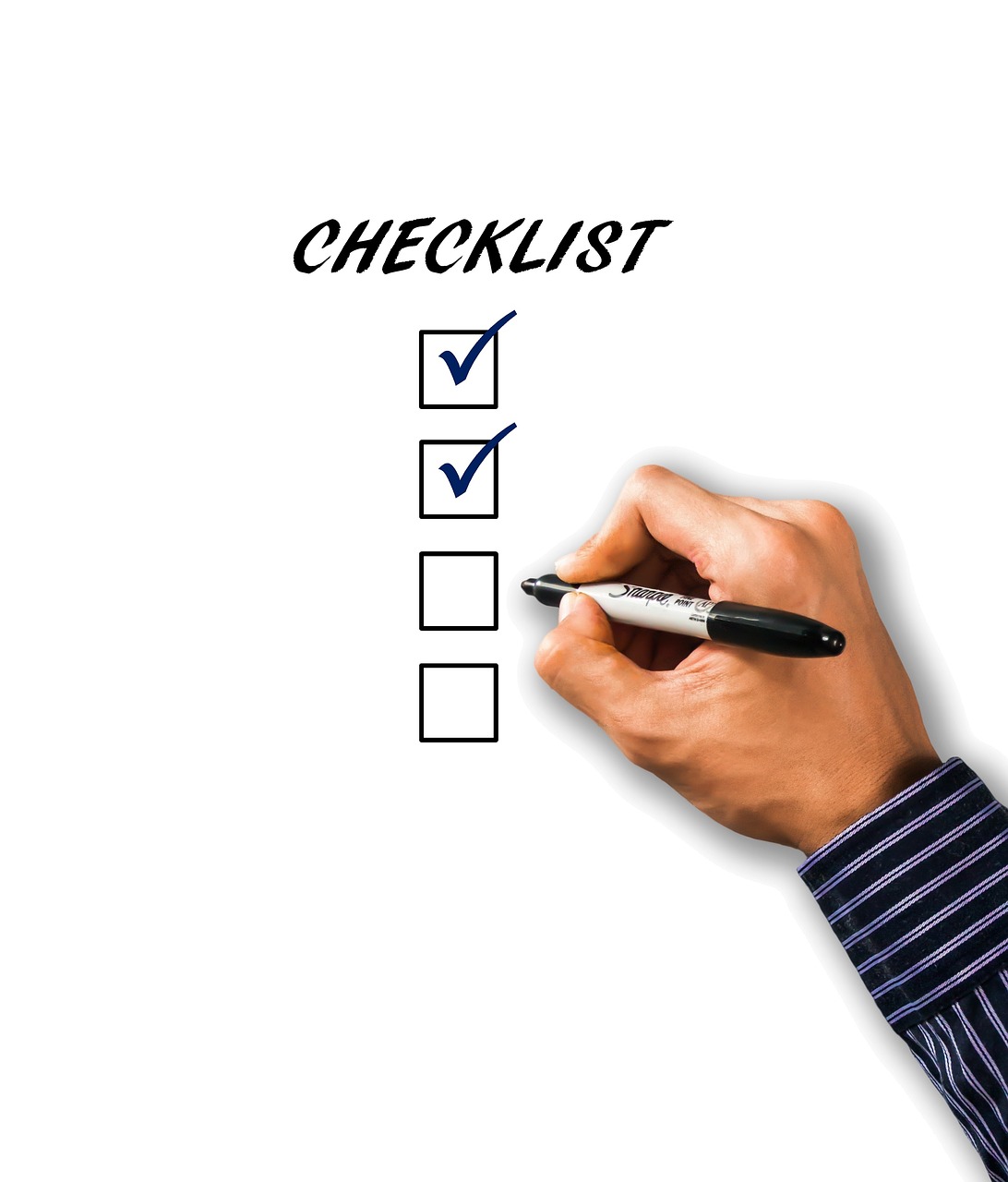Optimizing your blog posts for SEO is crucial for attracting more traffic to your blog and enhancing your engine rankings.
Your blog post-SEO checklist should integrate SEO basics like keywords to help you plan your content strategy, create content for users that also pleases search engines, and avoid pitfalls like keyword stuffing.
Remember to set the appropriate authorship, use alt text for visual content, and optimize your images to fit the width of your content area.
Powerful headline choices can serve as a potent anchor text in your content marketing efforts while crafting a title and meta description with powerful words can boost your rankings.
This article will discuss the SEO checklist for improving your blog posts.
Why Is Blog Post SEO Important?
Blog post SEO is imperative as it significantly influences your content’s visibility in search engine optimization (SEO) rankings. By ensuring the content aligns with SEO best practices and ranking factors, a well-optimized blog post can attract 100 million visitors, like the Buffer blog.
SEO tools are invaluable for analyzing your SEO competitor landscape and generating keyword ideas that resonate with your target audience. A solid content strategy underpins successful content marketing, wherein SEO is a key component.
By optimizing your blog posts for SEO, you’re not only aiming to boost your rankings but also to drive more qualified traffic to your blog. SEO best practices help create content that caters to user intent, critical for improving click-through rates and reducing bounce rates.
Lastly, an effective SEO strategy is not just about the immediate traffic. It is also about the long-term benefits of having a strong backlink profile and being seen as a thought leader in your industry.
This involves creating content that is shareable and valuable enough to earn links from other reputable sites, which can further solidify your standing in Google search results and other search engines.

How to Set Up and Use an SEO-Friendly Checklist?
An SEO-friendly checklist ensures each blog post is fully optimized for search engines. The first step is to ensure that your blog is accessible to search engines and that the right metrics are tracked to inform your SEO strategy.
Click-through rates are a valuable metric to follow, indicating how compelling your content is to potential readers.
Using an SEO checklist systematically can help you cover all the essential SEO aspects, such as including the main keyword in your title, maintaining an optimal keyword density, and ensuring meta descriptions are compelling and informative.
Regularly using a checklist can also streamline your content creation process, making it easier to maintain consistency across all your blog posts. The following are the steps to set up an SEO-friendly checklist:
1. Setup the Google Search Console
The Google Search Console is an essential tool for monitoring your site’s performance in Google. It provides insights into which pages are most popular and how they perform in search results and alerts you to any crawl errors that might impede your site’s visibility.
Setting up the Google Search Console is a simple yet crucial step in your SEO checklist. Once set up, you can use the Google Search Console to submit sitemaps, which helps Google discover and index your new or updated content more efficiently.
Additionally, the tool provides information on structured data issues so you can ensure that your site is as understandable to search engines as possible. Consider these steps to set up the Google search console:
- Check the keywords you want to rank for
- Check the ranking positions
- Look for website errors
- Submit the sitemaps
2. Install Bing Webmaster Tools
While Google is the predominant search engine, Bing Webmaster Tools also plays a role in a comprehensive SEO strategy. By installing Bing Webmaster Tools, you gain additional insights into how your site performs in Bing’s search results, which can complement the data from Google.
This step should not be overlooked, as it can reveal unique opportunities and refine your SEO strategy. With Bing Webmaster Tools, you can access reports on your site’s visibility in Bing, detect any crawl errors, and receive notifications about manual actions required to improve your SEO performance.
This tool enriches your understanding of the search landscape and supports a more holistic approach to SEO.
3. Setup Google Analytics
Google Analytics is indispensable for understanding your audience and measuring the impact of your SEO efforts. By setting up Google Analytics, you can track visitor behavior, including the average bounce rate, which helps you gauge the engagement level of your content.
The insights gleaned from this data help refine your SEO and content strategy. Google Analytics can help you:
- Check how much traffic your post gets from Google.
- Spot the pages on your site that bring the most traffic.
- Monitor if your traffic is increasing.
- Identify other links and search engines that bring traffic
- Look for page views, average bounce rate, and time-on-site
Google Analytics allows you to monitor the performance of individual blog posts, giving you a clear picture of what resonates with your readers. This knowledge is powerful for SEO, as it helps you create more content your audience finds valuable, thereby increasing your site’s relevance and authority.
4. Install an All-In-One SEO Plugin
An all-in-one SEO plugin is a versatile tool that simplifies the management of various technical SEO aspects. These plugins can assist with tasks ranging from generating XML sitemaps to optimizing on-page elements like titles and meta descriptions.
They provide a user-friendly interface for handling SEO tasks that might otherwise require specialized knowledge. Here are a few options worth considering:
- Yoast SEO
- The SEO Framework
- Rank Math
SEO plugins can also help with content analysis, offering suggestions for improvement and ensuring that your content adheres to SEO best practices. They often feature built-in tools for keyword optimization and content readability, making it easier for content creators to optimize their posts as they write them.

SEO Checklist
Developing an SEO checklist is a strategic way to ensure that each blog post is primed for search engine success. Start by ensuring the keyword in your title is relevant and engaging, setting the tone for the reader and search algorithms.
This foundational step cannot be overlooked when pursuing high search rankings. Other elements of the SEO basics to include in your checklist are optimizing your meta descriptions for clarity and appeal, ensuring URLs are concise and descriptive, and regularly updating your content to keep it fresh and relevant.
By following this checklist for each post, you’re more likely to see improved search engine rankings and higher traffic to your site.
1. Carry Out Keyword Research
Keyword research is the foundation of any successful SEO strategy, especially for blog posts. Use tools like the Google Keyword Planner to identify the target keywords your audience is searching for.
This tool provides insights into search volumes and competition levels for various keywords. Aim to select keywords that are relevant to your content and have a decent search volume but manageable competition. The following are the main points to consider for keyword research:
- Find your seed keywords
- Understand different types of keywords
- Discover new keywords
- Study your competitors
- Understand keyword metrics
- Pick and apply the chosen keywords to your website
Long-tail keywords, which are longer and more specific phrases, can be particularly valuable. They often have a lower search volume, but the specificity means that the traffic they attract is more targeted and potentially more valuable.
Including a mixture of these and shorter, more competitive keywords can create a balanced keyword strategy for your blog post.
2. Understand the Search Intent
Understanding the search intent behind your audience’s words and phrases is crucial for crafting content that meets their needs. When performing keyword research for SEO, analyze the keywords themselves and the type of content that ranks for those keywords.
This can give you insights into what users expect to find– informational content, a buying guide, or a service page. Keyword difficulty is another important metric to consider. It indicates how hard it will be to rank for a particular keyword.
A keyword with high difficulty may require more robust SEO efforts or a longer timeframe to rank well. Balancing between high and low-difficulty keywords can help you create a more effective SEO strategy for your blog posts.
3. Plan the Length of Your Blog Post
The length of your blog post can significantly impact its SEO performance. While there’s no one-size-fits-all answer, the length should be determined by the topic’s complexity and the content needed to satisfy user intent.
Longer posts often allow for more in-depth coverage and can be seen as more authoritative, but keeping the content focused and valuable is important. Consider your audience and the subject matter when deciding on post length.
Some topics may be adequately covered in a shorter post, while others may necessitate a long-form article to address all relevant points fully. Regardless, each post should be long enough to provide comprehensive coverage without filler content.
4. Take Steps to Improve Readability
Readability is a key factor in the success of your blog post. It’s not just about what you say but how you say it. Use short sentences and paragraphs to make the content easier to follow.
Breaking down complex ideas into simpler language can also help make your content more accessible to a broader audience. Subheadings are excellent for organizing content and guiding readers through your article.
They also provide natural pauses and help to highlight important information. Bullet points and numbered lists can enhance readability by presenting information in a clear, easy-to-scan format.
Lastly, consider the visual aspect of your post. Include white space to reduce visual clutter, and use images or infographics to complement your text and provide a break from continuous reading. These elements contribute to a better user experience, which can increase the time visitors spend on your page – a positive signal to search engines.
5. Write an Interesting Blog Post Title
Your blog post title is your first impression on readers and search engines alike. It should be compelling and include your primary keyword to improve the chances of ranking for that term.
The title must accurately reflect the post’s content while enticing readers to click through and read more. Brainstorm potential titles before settling on the final version.
Consider how your title will look on mobile devices, as a significant portion of internet traffic comes from mobile users. A good title is concise, informative, and engaging, regardless of the device it’s viewed on.
Remember, the title should attract clicks and set the right expectations for the post’s content. Misleading titles can lead to high bounce rates, negatively affecting your SEO efforts.
A well-crafted title, on the other hand, can significantly boost the visibility and success of your blog post.
6. Add a Meta-Description
A meta description is a brief summary of your blog post that appears under the title in search engine results pages. It should be compelling and include the primary keyword for the post. Although meta descriptions do not directly influence rankings, they are essential for click-through rates.
A well-written meta-description can entice users to choose your post over others in the results. Keep your meta-description concise, aiming for around 60 characters, to ensure it displays fully on search results pages. It should provide a clear value proposition, explaining why readers should read your post.
Think of it as a sales pitch for your content – what makes it unique and valuable? While Google sometimes generates its snippet based on the user’s query, a custom meta-description gives you control over how your content is presented.
It’s an opportunity to differentiate your blog post and make a strong case for why it’s worth the reader’s time.
7. Add Internal and External Links
Internal and external links are critical components of a well-optimized blog post. Internal links connect your content and guide readers to other relevant pages on your site, which can improve user engagement and time on the site. External links, when linking to authoritative sources, can enhance your content’s credibility and provide additional value to your readers.
Google has confirmed that links are one of the major factors used to rank in Google. These links tell search engines about the structure of your site and help them understand the relevance and value of your content.
When using internal and external links, ensure they are relevant to the topic and contribute to a better user experience. Including original research and data can add depth to your posts and encourage others to link to your site.
8. Add Images and Videos
Images and videos can dramatically improve the engagement and appeal of your blog post. Visual elements help break up text and illustrate points and can lead to increased time spent on the page.
When adding images, use descriptive alt text to provide context for search engines and assist visually impaired users. Including schema markup for images and videos can enhance their appearance in search engine results pages, potentially increasing click-through rates.
Be sure to optimize file sizes for quick loading and complement your visual content with relevant meta descriptions and titles. These practices help ensure that your visuals contribute positively to your blog post’s SEO.
9. On-Page and Off-Page SEO
Focusing on on-page and off-page SEO is essential for driving organic traffic to your blog post. On-page SEO involves optimizing your content for both search engines and users.
This includes using an on-page SEO checklist to ensure you cover all the elements, such as using keywords, meta tags, and content formatting. The goal is to optimize your content to be easily discoverable and rank well in search results.
Off-page SEO, on the other hand, refers to actions taken outside of your website to impact your rankings within search engine results pages. This includes strategies such as building backlinks, social media marketing, and influencer outreach.
These SEO tips help establish the authority and trustworthiness of your content, which are key factors in how search engines rank your pages. Implementing a combination of on-page and off-page tactics is vital for a comprehensive SEO strategy.
10. Organize Your Content Using Tags and Categories
Organizing content with tags and categories not only helps readers navigate your blog but also improves your Google rankings. Tags act as micro-categories highlighting specific details within your post, while categories group related posts under broader topics.
This method of organization aids HTTPS, ensuring a secure browsing experience, which is a confirmed ranking signal for search engines. Properly categorized content also creates structured archive pages that make it easier for engine traffic to discover your posts.
Moreover, using tags and categories strategically can help your posts rank for competitive keywords. It’s essential to maintain a balance, though; too many tags can dilute the strength of your content, while too few may miss opportunities to connect with mobile users and others in your audience.
The skyscraper technique, where you build upon existing content to make it more comprehensive, can be further enhanced by smart categorization, potentially attracting more targeted traffic.
11. Encourage Social Media Use
Encouraging readers to share your content on social media can significantly extend the reach of your blog posts. Integrating social sharing buttons at strategic points in your content makes the sharing process as simple as clicking a button.
By doing so, you tap into the networking power of social platforms, giving your content the potential to go viral and draw in more engine traffic. It’s also beneficial to actively engage with your audience on these platforms to foster community and further promote your posts.
Don’t underestimate the value social signals may have on your SEO efforts. Although not a direct ranking signal, social shares can lead to more backlinks, increased brand visibility, and a larger audience, all of which indirectly benefit your Google rankings.
Tailoring content for social media users, including compelling visuals and bite-sized content, can make it more shareable, thus amplifying your online presence and attracting more organic traffic to your blog.

Wrap-Up
As you complete this SEO checklist for blog posts, remember that the ultimate goal is to enhance your content’s visibility and engagement. Keyword research using keyword research tools is the foundation of any SEO strategy.
Combining this with comprehensive SEO training ensures your blog is equipped to climb the search rankings. Remember, the journey doesn’t end here; SEO is an ongoing process that requires continuous learning and adaptation.
Finally, ensure your blog is optimized for Google’s mobile-friendly criteria to cater to the ever-growing number of mobile users. Tools like a Google Analytics plugin and a headline analyzer tool can provide insights to fine-tune your strategy.
With dedication and the use of this ultimate SEO checklist, your blog posts are poised to achieve better performance in search results and captivate your intended audience.


